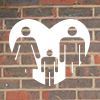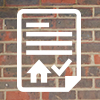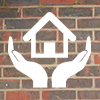Anyone who lives on the East Coast recently endured some pretty heavy rains with Hurricane Hermine. Starting in Florida as a category one hurricane, Hermine traveled up the East Coast. While it downgraded to a tropical storm as it moved northeast, the rain damage and flooding was very significant. It’s important to take preventative action in preparation for a large storm such as Hermine. So what can you do before and after heavy rains and flooding?
First of All, YOU Come First!
 Material items are replaceable, so if you live in a high-risk area, or are aware of a possible hurricane or large storm, pack a bag! Neighborhood evacuations are, unfortunately, very common and we want you to be prepared for the worst. Here’s what you’ll need:
Material items are replaceable, so if you live in a high-risk area, or are aware of a possible hurricane or large storm, pack a bag! Neighborhood evacuations are, unfortunately, very common and we want you to be prepared for the worst. Here’s what you’ll need:
- A few days-worth of clothes
- Insurance policy numbers
- Your insurance agent’s phone number as well as the insurance company’s main number
- All important documents
- Toiletries
- Money to last at least a week
- A battery-operated radio
Be Proactive
 First things first, if you feel like your home may flood, shut off all electrical power. However, if the area around any electrical outlets or boxes is already flooded, leave them alone. Also, make sure to check FEMA to find your area’s flood level. This way you can anchor all outdoor appliances, like your air-conditioning unit or fuel tank, above flood level. Once you’ve anchored any important outdoor appliances, be sure to modify your water valves. A flooded sewer can back up sewage into your home, which wouldn’t be a pleasant experience for anyone.
First things first, if you feel like your home may flood, shut off all electrical power. However, if the area around any electrical outlets or boxes is already flooded, leave them alone. Also, make sure to check FEMA to find your area’s flood level. This way you can anchor all outdoor appliances, like your air-conditioning unit or fuel tank, above flood level. Once you’ve anchored any important outdoor appliances, be sure to modify your water valves. A flooded sewer can back up sewage into your home, which wouldn’t be a pleasant experience for anyone.
During the Flood
 At this point, you’ll either need to evacuate or go to a higher point in your home if water levels are relatively low. Flood Smart is a great resource for action to take if your area is flooding, or about to flood. Make sure that if you come into contact with flood waters to wash your hands thoroughly. Try and keep the water away from any open cuts or wounds to prevent infection. Stay on top of news with a battery-operated radio and seek out shelters in your area. If it’s safe to drive, try to travel to a family’s or friend’s house who is higher above sea level or has not experienced the flooding and wait until it is safe to go home and assess any damage.
At this point, you’ll either need to evacuate or go to a higher point in your home if water levels are relatively low. Flood Smart is a great resource for action to take if your area is flooding, or about to flood. Make sure that if you come into contact with flood waters to wash your hands thoroughly. Try and keep the water away from any open cuts or wounds to prevent infection. Stay on top of news with a battery-operated radio and seek out shelters in your area. If it’s safe to drive, try to travel to a family’s or friend’s house who is higher above sea level or has not experienced the flooding and wait until it is safe to go home and assess any damage.
The Aftermath
 This can potentially be the scariest part, even after enduring the storm. If your home has clearly suffered damage, the first call to make is to your insurance company. File a claim right away. Also, be sure to document the damage with photos. Keep your power off until an electrician can come and assess your home and whether it’s safe or not to turn on any lights or appliances. When cleaning up, it’s important to wear boots and gloves to prevent any health concerns as the standing water can hold pollutants. Last but not least, be sure to dry any rugs or carpeting thoroughly to stop mold growth.
This can potentially be the scariest part, even after enduring the storm. If your home has clearly suffered damage, the first call to make is to your insurance company. File a claim right away. Also, be sure to document the damage with photos. Keep your power off until an electrician can come and assess your home and whether it’s safe or not to turn on any lights or appliances. When cleaning up, it’s important to wear boots and gloves to prevent any health concerns as the standing water can hold pollutants. Last but not least, be sure to dry any rugs or carpeting thoroughly to stop mold growth.